El clima: Transmission levels have risen again, with nearly the entire population (98.38 percent) currently living in areas with substantial or higher transmission – compared to 93.3 percent last week. These are extremely high levels before winter officially arrives next week.

Sobre variantes: The CDC variant proportions report, shows that BQ.1.1 remains the most common (36.8 percent), followed by BQ.1 (31.1 percent). Most other variants are declining with the exception of XBB.
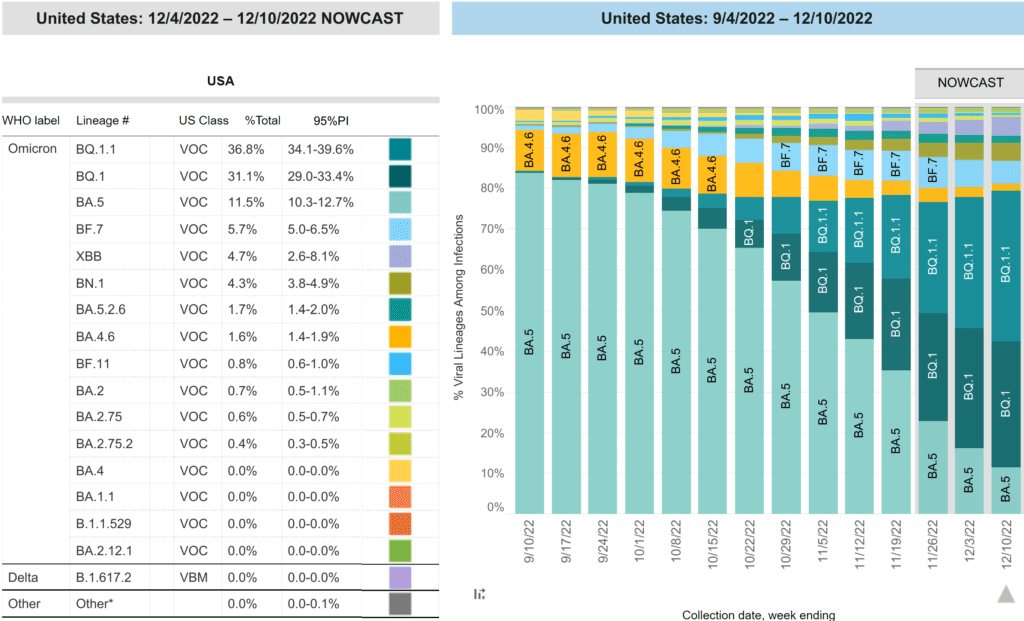
Regionalmente, BQ.1 & BQ.1.1 make up 50-75 percent of variants depending on region. XBB, in light purple, is most common on the East Coast but may be gaining a foothold elsewhere.

Monitoreo de aguas residuales: National wastewater levels continue to rise this week; other regions have caught up to the northeast. Levels are higher than 2020 but lower than 2021 was at this time of the year.

While most of the country still has lower levels than the January 2021 peak, some urban areas buck the trend; a particularly extreme case, Santa Clara county in the SF Bay Area, has reached an all-time high according to SCAN.
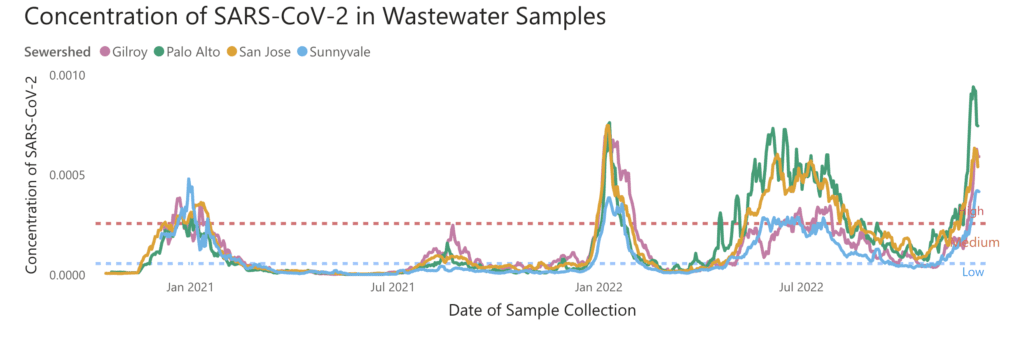
Kings County, NYC is at roughly half of its January peak, with other NYC regions showing similar, although slightly less severe, recent increases, according to NYS Wastewater Surveillance Dashboard.(Captured 12/9; dashboard down 12/10; back up 12/11).
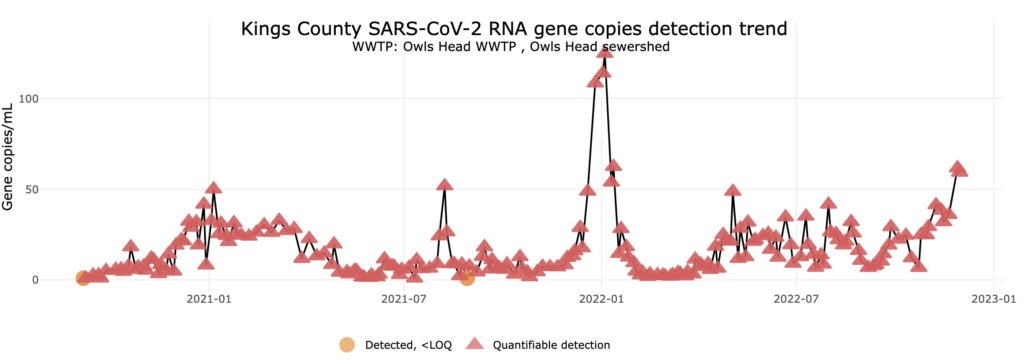
Vaccinations: El FDA authorized use of the updated bivalent booster for children as young as 6 months old.
New reporte by @KFF on vaccine commercialization finds uninsured and underinsured individuals may face significant barriers.
“Future supply may not always match demand, which would have unpredictable consequences for the price and availability of vaccines in the U.S.”
This move by the federal government is outrageous given the Administration’s insistence that “we have the tools,” “this is a pandemic of the unvaccinated,” and its refusal to implement other measures to ensure the public’s safety such as masking and ventilation requirements.
Hospitalizaciones: Hospitalizations are up 10.1% from the prior 7 day average, with the greatest increases continuing to be among children & those over 70.
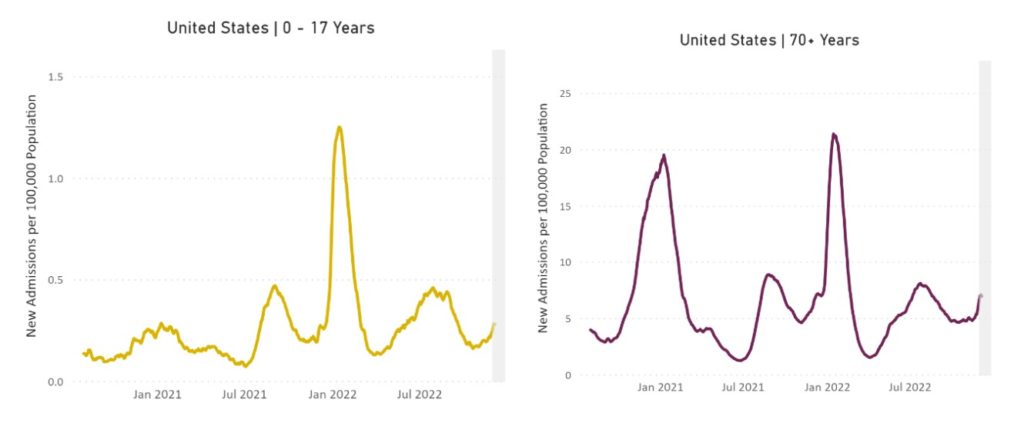
Non-COVID-specific hospital inpatient bed capacity is low across many regions of the US, according to the HHS.
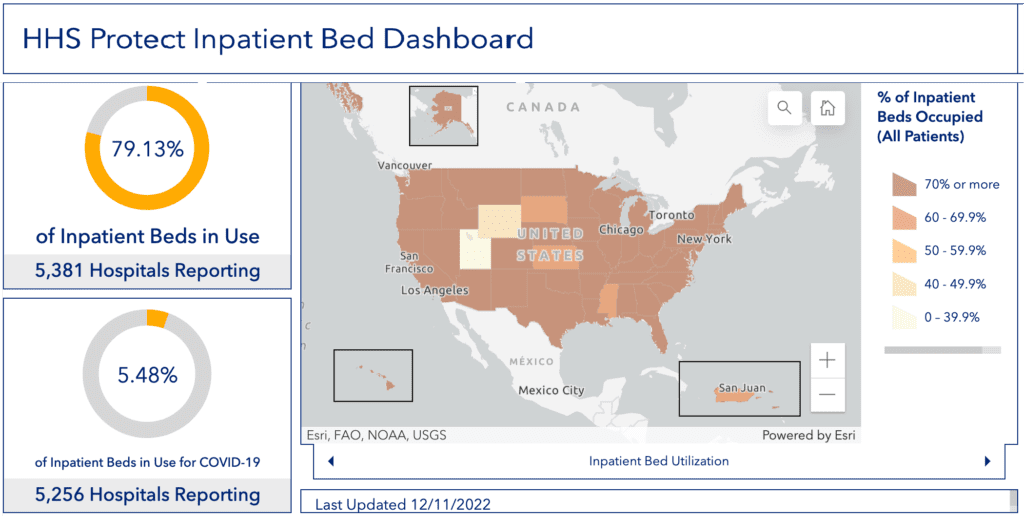
Fallecidos: The week of December 7, 2981 people died of COVID nationally. We are approaching a quarter million deaths in 2022.
Sobre COVID largo: A new reporte on Long COVID urges actions to address needs of patients and caregivers via @JAMAHealthForum @JAMANetwork
The @washingtonpost reports that mass Long Covid disability threatens the economy, fails to mention it also threatens human rights and dignity.
Pronóstico: All US Federally-owned buildings will now be required to use MERV 13 filtration and “verify” ventilation according to a new @whitehouse fact sheet.
“Despite the predicted surge, public health experts anticipate the Biden administration will wind down the ongoing COVID public health emergency in the coming months” per an artículo in @rollcall.
After the public health emergency ends, CDC can request state data on surveillance, testing, hospitalizations & deaths for a period of time — but then it will need Congressional approval. Walensky predicted the agency may not be able to report COVID community levels in a year.
Tome accion: New studies on DIY air cleaner y efficacy of CR box show low-cost, field-constructed air purifiers can be effective.
Amid surges in #COVID, #flu, and #RSV, public health officials have increased their encouragement de mask wearing.
These locations include #NYC, #BayArea, y #LA , but they remain unwilling to implement what is needed – mandates.
A list of 41 consensus statements and 57 recommendations published in @Nature form a global #COVIDconsensus – we need a refreshed commitment to bring COVID to a real, durable conclusion.
Notes: 1) The numbers in this report were current as of 12/9. The CDC updates data frequently as it receives refreshed information. Today’s numbers may be slightly different from the data here. 2) Check out the links throughout & see our website for more! https://peoplescdc.org.